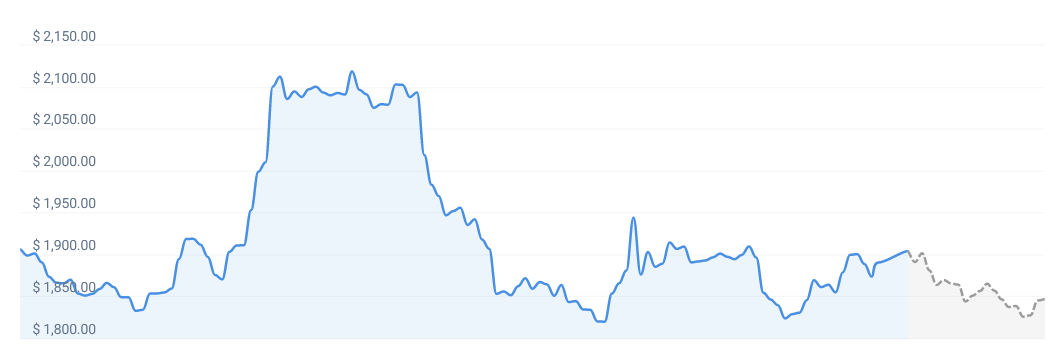The Ultimate Guide to Ethereum (ETH) Exchanges
Introduction
The world of cryptocurrencies has been a buzz with innovation and investment opportunities, and Ethereum (ETH) stands out as one of the most versatile and widely-recognized digital assets. Buying, selling, or trading Ethereum requires an understanding of ETH exchanges—the platforms where these transactions take place. This comprehensive guide will explore various facets of ETH exchange, from the different types available to best practices for secure and effective trading.
What Are ETH Exchanges?
ETH exchanges are digital marketplaces where you can buy, sell, and trade Ethereum. These platforms usually offer a range of other cryptocurrencies as well, allowing for the trading of multiple assets. ETH exchanges vary in terms of features, usability, security measures, and fees.
Types of ETH Exchanges
Centralized Exchanges (CEXs)
Centralized platforms like Coinbase, Binance, and Kraken are the most commonly used ETH exchanges. They offer an intuitive interface, a wide range of cryptocurrencies, and often, high liquidity.
Decentralized Exchanges (DEXs)
Platforms like Uniswap and Sushiswap allow users to trade directly with one another without an intermediary, enhancing privacy and security. However, they may lack the liquidity and user-friendliness of centralized exchanges.
Peer-to-Peer (P2P) Exchanges
These platforms facilitate direct transactions between individuals. While P2P exchanges allow more payment methods and increased privacy, they often require a high level of trust between the trading parties.
Key Features to Consider
Security
- Two-Factor Authentication (2FA): Always enable this feature to add an extra layer of security.
- Cold Storage: Ensure the exchange stores a majority of its assets in cold storage (offline), away from potential online hacks.
Usability
User interface and experience can significantly impact your trading effectiveness.
Fees
Fees can vary widely, so it’s essential to understand the fee structure of the exchange you choose.
Liquidity
High liquidity means that large transactions won’t significantly impact the market price of Ethereum.
Customer Support
Good customer support can be crucial, especially for new traders who might require guidance.
Setting Up an Account
Registration
Sign up with your email and create a strong password.
Verification
Most exchanges require some form of identity verification in line with Know Your Customer (KYC) regulations.
Funding the Account
You can fund your exchange account using various methods, including bank transfer, credit/debit card, or other cryptocurrencies.
How to Trade on an ETH Exchange
Placing an Order
- Market Order: Buy/sell immediately at the current market price.
- Limit Order: Set the price at which you want to buy/sell ETH.
Trading Pairs
Exchanges offer various trading pairs like ETH/USD, ETH/BTC, etc. Choose the one that best suits your needs.
Executing the Trade
Once you’ve chosen your order type and trading pair, you can proceed to execute the trade.
Advanced Trading Options
Margin Trading
Some platforms allow trading on margin, which involves borrowing funds to amplify gains or losses.
Futures and Options
Advanced traders may opt for derivatives like futures and options to hedge or speculate on ETH prices.
Tax Implications
Tax laws surrounding crypto trading vary by jurisdiction. It’s advisable to consult a tax advisor to understand any potential tax liabilities.
Security Best Practices
- Keep Software Updated: Ensure your computer and security software are up-to-date.
- Beware of Phishing Scams: Always double-check URLs and email addresses.
- Use a Secure Connection: Ensure you’re using a secure and private Wi-Fi connection when accessing your ETH exchange.
The Importance of Diversification
While Ethereum is a promising asset, diversification is key in managing risks effectively.
FAQs
- Can I transfer ETH from one exchange to another?
Yes, it’s possible but usually incurs a network fee.
- Is it safe to store ETH on an exchange?
It’s generally safer to transfer your ETH to a private wallet if you’re not actively trading.
- Do ETH exchanges have mobile apps?
Many do, offering you the flexibility to trade on the go.
Conclusion
Understanding the nuances of ETH exchanges can make a significant difference in your trading experience and profitability. From the type of exchange you choose to the features you should look out for, being well-informed can save you time, money, and stress. With the burgeoning growth of the crypto sector, ETH exchanges will continue to evolve, offering a broader range of services and assets. Keeping abreast of these changes will ensure you are well-positioned to take advantage of the investment opportunities that Ethereum and its ecosystem have to offer.
By following this guide, you will be better equipped to navigate the world of ETH exchanges, making you a more informed and, hopefully, a more successful trader.






